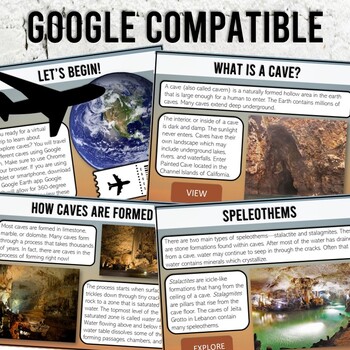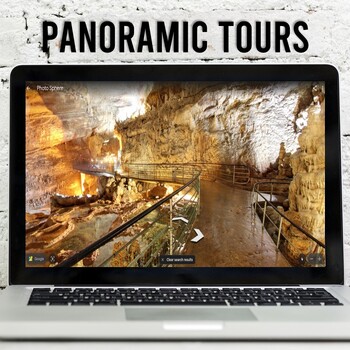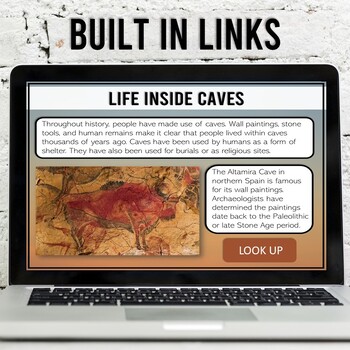Caves Virtual Field Trip (8 Different Caverns with Google Earth Exploration)
- PDF
- Google Apps™

What educators are saying
Description
Take your students on a virtual field trip to learn all about caves! Using a combination of informational text, Google Earth exploration, videos, and visuals, your students will learn about and tour 8 different caverns around the world.
This virtual field trip covers:
:: What is a Cave?
:: How Caves are Formed
:: Speleothems (stalactites, stalagmites)
:: Speleology (spelunking or potholing)
:: Life Inside Caves
:: A Cave Legend
:: Cave Dwellers
:: The World's Longest Cave
:: Primary Caves (lava tubes)
:: Karst Caves
:: Sea Caves
:: Glacier Caves
:: Ecosystems
This Virtual Field Trip Includes:
:: Informational Text (build background knowledge)
:: Response Questions (EDITABLE)
:: Video Links (YouTube)
:: Google Earth 360-degree exploration
:: Grading Rubric
:: Everything is set up in Google Slides & ready to go!
SEE PREVIEW FOR MORE DETAILS
How it Works:
This virtual field trip can be conducted teacher-led or shared with students through Google Classroom as an independent assignment. Everything is set up for you. This resource is LOW PREP and would even make great sub plans. Student directions are found within the lesson, and direct links are included to specific videos and Google Earth links. All work is completed digitally. No printing is necessary.
Structure:
This virtual field trip is structured. This means that the informational text and links are meaningful and are meant to lead students to think critically as they respond to the questions throughout the virtual field trip. This is also a great way to keep students accountable as they learn and explore. All response questions are EDITABLE so that you can tailor them to your class needs. Students complete this activity in edit mode of Google Slides.
Standards Alignment:
:: Next Generation Science Standards
:: Common Core Standards for Reading Informational Text
:: Washington Social Studies Standards
:: Can crosswalk to many different standards
Grading Rubric:
A grading rubric is included which assesses: accuracy, thoroughness, validity, and writing conventions. Answers will vary throughout, as students record their observations and findings.
Technology:
Please note that video clips are included within the activity. You will want to make sure you have access to the YouTube links before starting this activity. You will also want to ensure you have Google Earth downloaded on devices.
If you have questions, feel free to reach out prior to purchasing. Looking for another virtual field trip that you don’t see? Let me know! I can be reached directly by email at: michellemcdonald9515@gmail.com
Thank you!
Michelle McDonald, B.A.E.
Social Studies Education, K-12
Elementary Education K-8
* * * * * * * * * * * * * * * * * * * * * * * * * * * * * * * * * * * * * * * * * * * * * * * * * * * * * *
Connect with Me:
Instagram @mrsmichellemcdonald
Facebook: Michelle McDonald-Strategic Educational Services
Blog: StrategicEducationalServices.com
* * * * * * * * * * * * * * * * * * * * * * * * * * * * * * * * * * * * * * * * * * * * * * * * * * * * * *
Follow me on TpT to be the first to learn about new products, sales, and discounts. Follow Michelle McDonald





